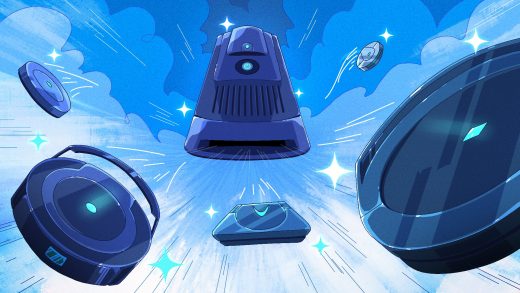I grew up on manga. At this point, saying that I’ve read it for over half my life would be accurate. That said, I’m aware that manga can be an intimidating medium to dive into. There’s a lot. Series can be very long. And it sometimes utilizes a specialized terminology that’s not always explained to new readers. Because of this, I thought people might welcome a basic beginner’s guide to manga.
Let’s start with a definition of manga. Manga are simply comics from Japan. In fact, that’s what manga means; it’s Japanese for “comic.” Now before experienced manga fans start quibbling, I know that’s a simplified definition. If you look at the manga industry in Japan, there are creators who aren’t Japanese. Korean comics, or manhwa, have been serialized in Japanese comic anthologies. One of this season’s anime is based on a manga by a French creator. Even so, I believe this is a good starting point for new manga readers.
When I ask people what they find most confusing about manga, the same thing always comes up: the genres. I get why. They don’t easily translate to existing genres we’re more familiar with in the U.S. So for the purposes of this beginner’s guide to manga, I will be focusing on that area.
A Beginner’s Guide to Manga Genres
When we normally think of genres, we think of categories that have common tropes, storytelling modes, and goals. The horror genre tries to scare you. The fantasy genre will probably feature some type of magic. A romance novel should be about two people falling in love (and finding their happily ever after).
We find those genres in manga, too. There’s horror manga, fantasy manga, and romance manga. But–and this is a key point—the manga industry doesn’t talk about genres along those lines. Those are more like sub-genres. Instead, manga genres are usually determined by main target demographic.
Before I go into what those demographics are, I want to emphasize these age and gender demographics aren’t prescriptive. Obviously, people read out of their supposed target demographics all the time. A couple of the categories wouldn’t be as big as they are if that didn’t happen. So, let’s begin.
Shonen
A beginner’s guide to manga must start with this genre. Many of the series available in English fall into this category. Shonen manga are targeted toward teenage boys. It’s one of the equivalent genres to YA. While there are exceptions, shonen manga typically feature lots of action and male protagonists who want to get stronger in some way. This is also the category where you’ll find lots of found families and squads of close friends. For example, shonen manga loves focusing on the bonds forged by a group of people going on a quest together or the camaraderie that arises between the teammates of a struggling sports team that wants to win the tournament.
A few examples of shonen manga:
Dragon Ball by Akira Toriyama
Launched in the early 1980s, many people cite Dragon Ball as the manga that shaped the shonen category as we know it today. There’s a quest to gather seven Dragon Balls to summon a dragon able to grant any wish. A group of people gather together along this quest. Fighters must get stronger along the way to defeat enemies that also want to summon this dragon, and so forth.
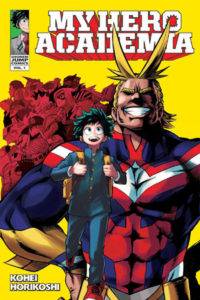 My Hero Academia by Kohei Horikoshi
My Hero Academia by Kohei Horikoshi
Arguably the most popular shonen manga today, My Hero Academia follows a young boy born without superpowers in a world where most everyone has a superpower. That’s not going to stop him from realizing his dream, though. My Hero Academia even drops us into a high school setting where the characters literally learn how to use their superpowers, hone their skills, and become stronger.
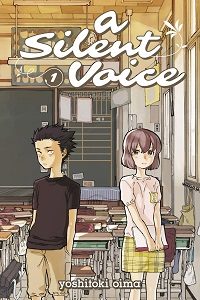 A Silent Voice by Yoshitoki Oima
A Silent Voice by Yoshitoki Oima
Remember when I said there are exceptions to the perceived common conventions of the shonen manga genre? A Silent Voice is one of them. There are no drawn out battle scenes. There are no power-ups or gaining new powers. Instead, it focuses on a boy who has been both the bully and the bullied, and how he moves on from that.
Shojo
If shonen manga targets teenage boys, shojo manga targets teenage girls. There’s a misconception that shojo manga is equivalent to romance, and that’s definitely not true. Shonen manga has some notable love stories. Remember: manga genres usually have to do with target demographic, and those target demographics have varied tastes because readers contain multitudes. No more, no less. When looking at shojo manga as a whole, I’d say a common trait is the exploration of relationships, which are sometimes romantic but not always, and the emotions associated with those relationships.
A few examples of shojo manga:
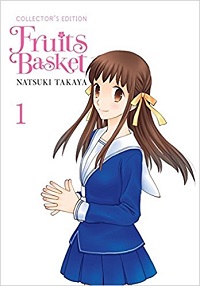 Fruits Basket by Natsuki Takaya
Fruits Basket by Natsuki Takaya
While Fruits Basket is a perennial favorite, I include it here for its significance in the North American manga industry. When it was originally published by TOKYOPOP, it became a bestselling title and blew away all preconceived notions that girls don’t read comics. The manga follows an orphaned girl who moves in with a family that lives under a curse.
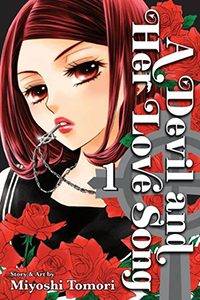 A Devil and Her Love Song by Miyoshi Tomori
A Devil and Her Love Song by Miyoshi Tomori
After being expelled from an all-girls Catholic school, Maria transfers to a new high school where she hopes to find a fresh start. However, the contrast between her beautiful face and her blunt, straightforward nature puts off her classmates. But in addition to her pretty face and her sharp tongue, Maria also has an angelic singing voice that soon provides a way for her to form new relationships.
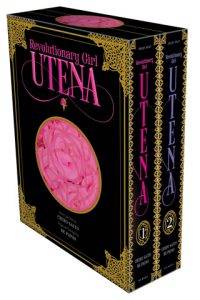 Revolutionary Girl Utena by Chiho Saito
Revolutionary Girl Utena by Chiho Saito
Anime fans will recognize this title but because the anime and manga were developed simultaneously, they go in different directions. The basic premise is the same, however. After admiring a prince as a little girl, Utena Tenjou aspires to become a prince herself. When she attends an academy where duels take place and another girl is in need of rescue, she’ll soon have her chance to become one.
Seinen
Seinen manga are targeted toward men in their 20s and older. It’s the equivalent of adult fiction. The storylines and thematic handling tend to be more mature than what you find in shonen manga. I like to think of the difference this way. If the hope and promise of the future permeate the shonen genre, a little more cynicism and pragmatism permeate seinen.
A few examples of seinen manga:
 Lone Wolf and Cub by Kazuo Koike and Goseki Kojima
Lone Wolf and Cub by Kazuo Koike and Goseki Kojima
One of the more famous classic samurai titles, Lone Wolf and Cub focuses on a father and son duo who seek revenge against the clan that successfully engineered the father’s fall from grace and his being branded a traitor. This manga is known for its stark portrayal of violence, which is something you’ll see more often in seinen manga. Not that shonen manga doesn’t have its share of violence. I’d be lying if I claimed that. But seinen portrayals tend to be more gruesome and explicit.
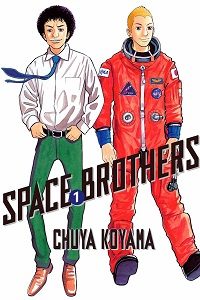 Space Brothers by Chuya Koyama
Space Brothers by Chuya Koyama
Space Brothers revolves around two siblings who dream of becoming astronauts. But while one achieves his dream, the other doesn’t quite make it. That all changes when he receives an acceptance letter into a new training program for astronauts.
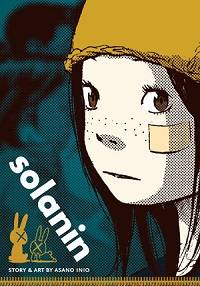 Solanin by Inio Asano
Solanin by Inio Asano
The pervasiveness of the shonen genre has led many people to believe that manga consists of never-ending series of 50+ volumes. Intimidating, for sure, but that’s not true. One of my goals for this beginner’s guide to manga was to include shorter works that lower the barrier of entry. Solanin is a two-volume manga about post-college life and what it really means to go after your dreams.
Josei
Josei is the female demographic equivalent to seinen. Unlike the previous three categories, there’s a wide variety of subject matter and themes so it’s a little more difficult to pinpoint common traits beyond the target audience. Like seinen, josei features more mature storytelling and franker depictions of relationships and situations.
A few examples of josei manga:
 Karneval by Toya Mikanagi
Karneval by Toya Mikanagi
Due to the action-focused plot and male protagonists, people mislabel Karneval as a shonen manga. It’s not. The story revolves around two strangers who meet in a strange mansion and soon become branded as wanted criminals by natural security forces.
 Nana by Ai Yazawa
Nana by Ai Yazawa
I hesitated to include this title because it’s incomplete and due to the creator’s health issues, I’m unsure as to whether it will ever be completed. However, I wanted to present it as an example of how relationships are portrayed in josei versus shojo manga. The problems these characters face are adult problems, not teen problems, and the relationships reflect that. To give an idea of what this manga’s about, it focuses on two very different women with the same name who become unlikely friends.
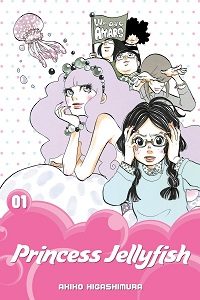 Princess Jellyfish by Akiko Higashimura
Princess Jellyfish by Akiko Higashimura
Princess Jellyfish follows Tsukimi, a resident of an all-female apartment building that’s become a haven for women with geekish interests. Socially awkward and afraid of stylish people, Tsukimi’s life changes when her path intersects with that of a beautiful, cross-dressing young man who is also a politician’s illegitimate son.
Boys Love
So while I said this beginners guide to manga would cover the main genre categories, I wanted to include two other categories that you may run into while delving into the medium.
Sometimes referred to as yaoi, boys love (oft abbreviated as BL) refers to manga featuring homoerotic relationships between men. It is predominantly created by women for a readership of women, and yes, it can be as problematic as it sounds. But taking that into account, there are still some interesting stories to be found here. Just be aware that you may encounter some pitfalls along the way.
A few examples of BL manga:
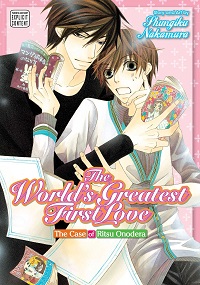 The World’s Greatest First Love by Shungiku Nakamura
The World’s Greatest First Love by Shungiku Nakamura
When Ritsu Onodera leaves his family’s publishing company, he transfers to the shojo manga editorial department of another company. (How meta for this beginner’s guide to manga!) He’s not entirely thrilled by the prospect because having been burned by love before, the last thing he wants to do is edit romance stories. How fitting, then, that his new boss is his old high school boyfriend.
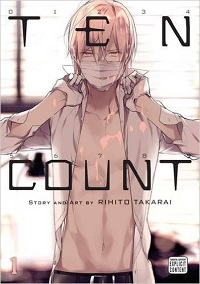 Ten Count by Rihito Takarai
Ten Count by Rihito Takarai
I want to preface this manga with the warning that this isn’t the most ethical depiction of therapy by any stretch of the imagination. But, keeping that in mind, this manga does some fascinating things with characterization and mental illness. In a nutshell, it follows a character who seeks help from a therapist to treat his OCD and mysophobia.
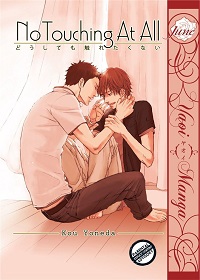 No Touching At All by Kou Yoneda
No Touching At All by Kou Yoneda
I personally feel like Kou Yoneda is an underrated BL mangaka. If you like angst and complex characters, her stories are for you. This particular manga is about the complicated relationship between a shy young man and his boss at his new job. In case you haven’t noticed, uncomfortable power dynamics are indeed a staple trope of the BL category.
Yuri
As you can probably deduce, yuri refers to manga featuring homoerotic and homoromantic relationships between women. Unlike boys love manga, its target audience consists of both women and men.
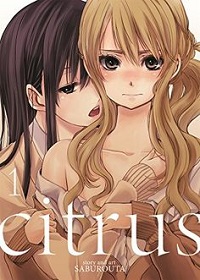 Citrus by Saburouta
Citrus by Saburouta
A lot of yuri manga is set in high school, and Citrus embodies that. After her mother remarries, fun-loving Yuzu transfers to an all-girls high school where she struggles to fit in with the conservative student body. She finds herself clashing most with the student council president, who is her new stepsister. So imagine her confusion when she starts developing romantic feelings for her stepsibling.
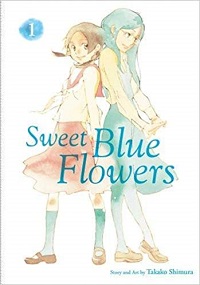 Sweet Blue Flowers by Takako Shimura
Sweet Blue Flowers by Takako Shimura
On the first day of high school, Akira reunites with her childhood best friend, Fumi. Fumi is glad to resume their friendship, but she’s also nursing a broken heart because her first love recently got married. That’s difficult enough as it is, but she’s also struggling with the fact that her first love was a woman. As the title suggests, this is a very sweet, poignant manga.
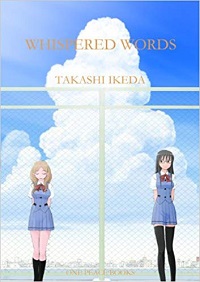 Whispered Words by Takashi Ikeda
Whispered Words by Takashi Ikeda
Another story set in high school, this one focuses on two girls where one is in love with the other but can’t confess. Why? Because the object of her affections likes cute and delicate girls, not athletic girls who have a black belt in karate.
And that about covers the major manga categories. There are others, of course, but they’re not quite big enough yet in the English-language market so I didn’t include them in this beginner’s guide to manga. Have any questions? Shout out below. Looking for more recommendations? Check out this list of 50 manga to read.
Source : A Beginner’s Guide to Manga






